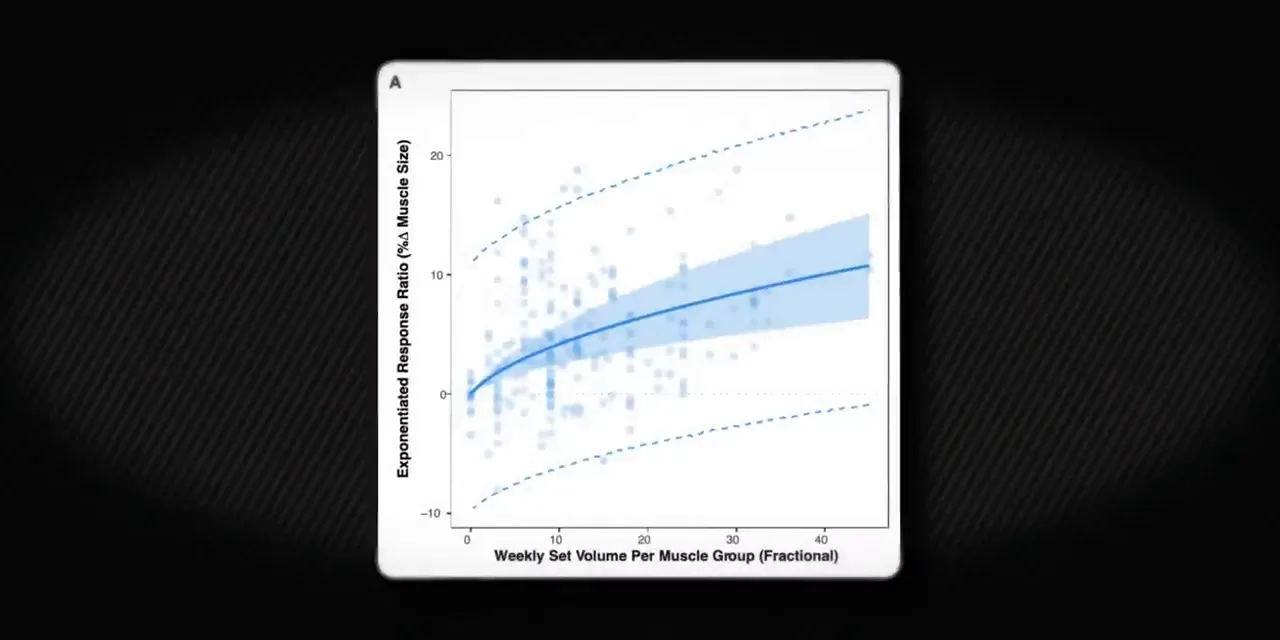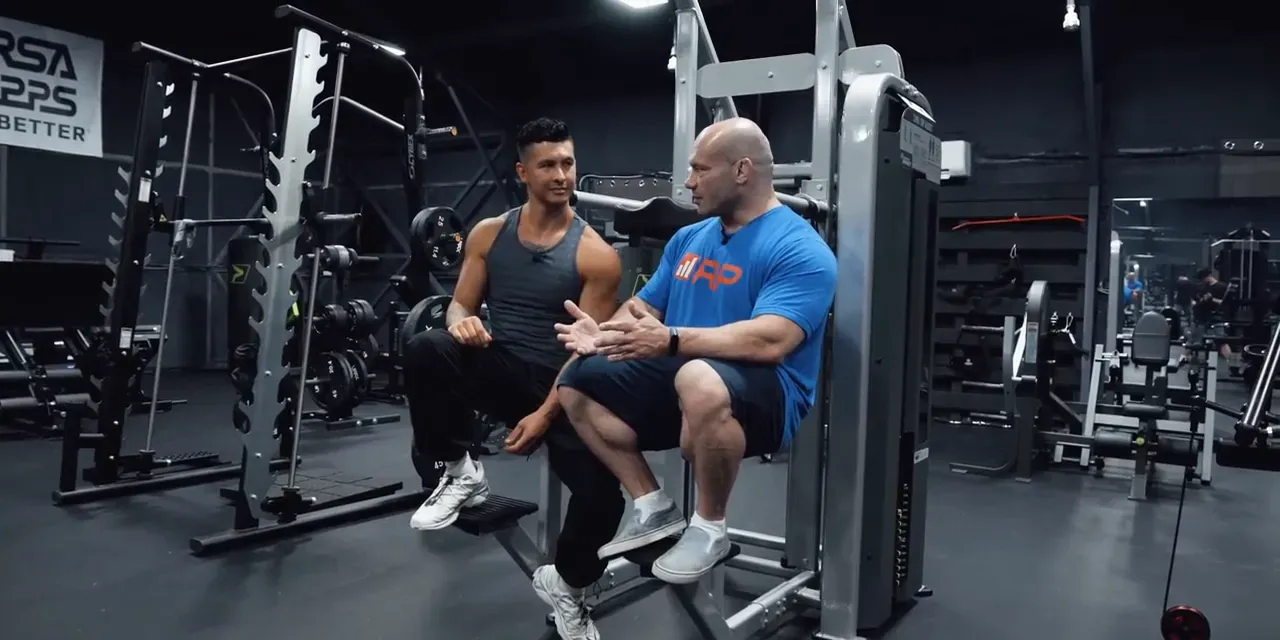How to Build Muscle Naturally: Expert Guide [In-Depth]
Transform your physique with this expert-approved advanced natural lifter playbook
![How to Build Muscle Naturally: Expert Guide [In-Depth]](/content/images/2025/09/how-to-build-muscle-naturally.png)
Key takeaways
- You should aim for 10–20 weekly sets per muscle and prioritize lagging areas.
- You get ~30% more gains training each muscle twice vs. once per week.
- You must treat sleep, stress, and a modest 250 kcal surplus as non-negotiable.
Try this today
✓ Add 4–6 extra weekly sets to one lagging muscle and split them across 2–3 sessions.
Want to build more muscle by training smarter, not just harder?
In this expert review, we analyze, critique, and expand on Jeremy Ethier's practical advice for natural lifters.
What makes this review different?
- Carefully reviewed and fact-checked by experts
- Little-known tips to reallocate volume and prioritize visual impact
- Complete workout plan inspired by prioritizing lagging muscles
Why should you listen to us? We've published 300+ articles, all rigorously reviewed by an exercise scientist with 25+ years of real-world training experience.
Continue reading to learn an evidence-minded, practical path out of intermediate natty purgatory.
Related:
- Volume & Hypertrophy — How Much Sets Work
- How Often to Train for Hypertrophy
- Bulking: How Fast Should You Aim to Gain Muscle?
In a nutshell: Intermediate natty strategy
You hit a wall after 3–6 years. You trained hard and gained a lot early. Now, progress slows. You must switch from brute force to strategy. Focus your limited yearly muscle gain on the places that change your look most. Manage volume, split it sensibly, and make recovery non-negotiable. Small shifts give big visual returns.
You can still add 1–3 lb of muscle per year. But where you place those pounds matters. Prioritize lagging parts. Use frequency to distribute work and avoid giant single-session set counts. Sleep, tiny surpluses, and low stress amplify the gains you do get.
Stay patient. Natural peaks often arrive later. Keep showing up and train smarter.
Key concepts
- Constraint identification: Find your single biggest limiting factor and fix it.
- Volume allocation: 10–20 weekly sets per muscle but distribute where it matters.
- Recovery triad: Calories + sleep + stress control drive the realized growth.
Smart Volume & Frequency
Find the one bottleneck
You can only gain so much muscle each year as a natural. That rate drops with experience. Early on, simple hard work wins. Later, you must look for the single biggest constraint. Is it volume, exercise choice, frequency, sleep, or nutrition? Fix one thing at a time. Pick the biggest knot. Untie it.
How much volume should you aim for?
The general sweet spot for most intermediate naturals sits between about 10 and 20 sets per muscle per week. Lower than that and you leave gains on the table. Far higher and you face diminishing returns and chronic fatigue. Pick an intended volume, then monitor recovery and progress.
Practical rule:
- Begin lower (10 sets/week) if you have little time and high life stress.
- Target 12–16 sets/week for most muscles if you can recover well.
- Push toward 18–20 sets/week only for prioritized, fast-recovering muscles.

Don't spread volume evenly — prioritize
You're likely limited to 1–3 lb of muscle per year. So stop pretending every muscle will change equally. You get more return by focusing those pounds on the muscles that transform your look.
Example: If you expect to gain 2 lb total, placing that mass on your side delts makes a bigger visual difference than distributing across the whole body. Work smarter: reduce volume on the “easy” muscles and funnel work to laggers.
Per-session limits and distribution
How many sets of one muscle in a single workout? Evidence and practical observations suggest diminishing returns when you exceed roughly 10–11 sets for a single muscle in one session. If you want 18 sets/week for a priority muscle, split them across 2–3 sessions. That keeps intensity high and fatigue manageable.
- Do 6–9 sets per muscle per session when training twice weekly.
- Do 4–6 sets per muscle per session when training three times weekly.
- Keep single-session totals under ~11 sets to avoid local exhaustion reducing quality.
Frequency matters
Going from training a muscle once weekly to twice weekly gives a big bump — roughly a 30% improvement in gains. If you still train a muscle only once a week as an intermediate, switch to two sessions minimum.
If a muscle recovers fast and you need to pour a lot of volume into it (side delts, calves, sometimes biceps), consider 3 sessions per week or even 4 very small sessions (4–6 sets each) for short-term priority phases.
- One session/week: fine for maintenance.
- Two sessions/week: a baseline for progress.
- Three sessions/week: useful for prioritized, fast-recovering muscles or when you want to distribute 15–20 sets.
How to schedule volume
Start by deciding your weekly sets for each muscle. Then pick a split that keeps per-session sets under ~11. Example for shoulder priority (20 sets/week):
- Day A: 6–7 sets (focused overhead pressing + light laterals)
- Day B: 6–7 sets (side delt + rear delt emphasis)
- Day C: 6–7 sets (high-rep cable work and finishers)
That approach keeps each session effective and avoids a blowout session where your later sets are low-quality due to local fatigue.
Recovery, Sleep & Exercise Selection
Exercise selection is personal — stop copying blindly
You will see great physiques using specific exercises. But copying their exact movement does not guarantee you the same shape. Genetics, limb lengths, torso length, and relative strengths change how an exercise stimulates you.
Two lifters can do the exact same program and look different after three years. Use exercises as experiments, not recipes. If an exercise doesn’t hit your target muscle, change it.

Examples of useful exercise swaps
Three exercises Jeremy highlighted that can help natty lifters:
- Low-incline dumbbell press — sometimes a lower bench angle hits the upper chest better for some lifters.
- Behind-the-body cable lateral raises — reverse the strength curve to emphasize the elongated stretch on side delts.
- Incline preacher/line curl (Dr. Mike’s variant) — intense, stable biceps stimulus that creates huge pumps.
How to test which variation works for you
Use the sternum angle test for chest incline. Lie on the bench, hold your phone over your sternum, and note the angle. If your sternum is relatively flat, a lower incline may hit upper chest best. If it angles back, a steeper incline might be needed. Small changes reveal which range places load on the muscle rather than the joint or tendon.
- Test 2–3 variations for 4–8 weeks each.
- Rate the tension you feel in the intended muscle, not the weight moved.
- Keep the movement that consistently produces better local fatigue and visible response.
Nutrition: stop guessing, refine your surplus
Nutrition drives how much of the training stimulus converts into muscle. Many intermediates make two errors:
- They keep a big surplus they used as a newbie. That surplus now adds mostly fat, not muscle.
- They remain scared of any surplus after repeated cuts and never push past maintenance.
Target a modest surplus: roughly 250 kcal per day. Expect 0.5 lb/week or about 1% bodyweight per month for most intermediates. That rate reduces fat gain while giving muscle enough building materials.
Sleep is not optional
Even one night under six hours changes your hormone milieu and your future protein synthesis capacity. You might perform the same workout while tired, but your maximal protein expression after that workout will be lower. For naturals, sleep is a multiplier of training stimulus.
- Aim for 7–9 hours per night most nights.
- If forced to choose, cut one workout rather than sacrifice consistent sleep.
- If sleep dips, reduce volume or intensity temporarily to avoid accumulating fatigue.
Stress management and life context
Training provides stress. Everything else in life adds more. Your capacity to absorb training depends on your recovery budget. If life is hectic, volume must drop. If life is calm, you can push higher volume.
Practical leanings:
- Plan priority training blocks during calmer life phases.
- Taper volume around high-stress weeks (exams, deadlines, intense work travel).
- Use active recovery and low-effort distractions (zombie TV, walks) to restore mental energy.

Smart Prioritization: A 12-Week Natty Priority Plan
This 12-week plan uses the key insight: allocate your limited yearly muscle gain to the muscles that change your look most. The program assumes you can train 4 days per week and have standard gym equipment.
Program overview
- Ideal for: intermediates (3–6 years lifting) who need targeted progress.
- Equipment needed: barbell, dumbbells, cable machine, leg press/hack squat optional.
- Core insight: reallocate 25–40% more volume to 1 prioritized muscle for 12 weeks.
Workout
Notes: Use the rep ranges to bias tension and time under tension. Keep rest 60–120s depending on the lift. Focus on progressive overload—add reps first, then weight.
Day 1 — Upper Push (Chest focus)
- Low-incline dumbbell press — 4 sets × 6–10 reps — Rest 90s
- Flat bench press — 3 sets × 6–10 reps — Rest 90s
- Incline cable fly (adjust angle to sternum test) — 3 sets × 10–15 reps — Rest 60s
- Overhead press — 3 sets × 6–10 reps — Rest 90s
- Side delt behind-the-body cable raises (prioritize if shoulders are lagging) — 4 sets × 10–15 reps — Rest 60s
Pro tips:
- Move the bench angle until you feel tension in the intended chest fibers.
- Use a controlled eccentric, 2–3s tempo on presses for extra stimulus.
Day 2 — Lower Body
- Back squat or heel-elevated squat — 4 sets × 6–10 reps — Rest 120s
- Romanian deadlift — 3 sets × 6–10 reps — Rest 120s
- Hack squat / leg press — 3 sets × 8–12 reps — Rest 90s
- Leg curl — 3 sets × 10–15 reps — Rest 60s
- Standing calf raise — 4 sets × 10–15 reps — Rest 60s
Pro tips:
- For quad bias, use elevated-heel stance or hack squats.
- Control the descent to accumulate quality tension.
Day 3 — Upper Pull (Back & Biceps)
- Barbell row or chest-supported row — 4 sets × 6–10 reps — Rest 90s
- Lat pulldown / pull-up — 4 sets × 6–10 reps — Rest 90s
- Single-arm cable row — 3 sets × 8–12 reps — Rest 60s
- Incline preacher curl / Dr. Mike line curl for biceps — 4 sets × 8–12 reps — Rest 60s
- Hammer curls — 3 sets × 10–12 reps — Rest 60s
Pro tips:
- Use a slow eccentric on curls for extra time under tension.
- Prioritize vertical pulling for lat width, horizontal for thickness.
Day 4 — Upper Mixed / Shoulder Priority
- Seated dumbbell press — 3 sets × 6–10 reps — Rest 90s
- Behind-the-body cable lateral — 4 sets × 10–15 reps — Rest 60s
- Rear delt machine or face pulls — 3 sets × 12–15 reps — Rest 60s
- Chest-supported incline fly — 3 sets × 10–15 reps — Rest 60s
- Finisher: light lateral dropsets or cable 3-way raises — 2 rounds
Pro tips:
- If shoulders are your priority, increase lateral sets to 12–18/week split over days.
- Use strict tempo and avoid heavy momentum on side delts to keep tension.
Notes on Program Execution
- Progression: add 1–2 reps per set each week until top of range, then add weight.
- Deload: take week 7 or 9 as a reduced-volume week if you feel stale.
- Nutrition: aim for +250 kcal/day and 0.8–1.0 g protein per lb of body weight.
- Sleep: prioritize 7+ hours nightly; if sleep drops, reduce volume for 1–2 weeks.
Expert corner: Proven strategies & hidden gems
Practical Applications
- Volume reallocation: If one muscle lags, add 6–10 extra sets/week to that muscle for 8–12 weeks, split across 2–3 sessions.
- Frequency boost: Move from 1×/week to 2×/week for a muscle. Expect ~30% better returns if you do it well.
- Nutrition tuning: Reduce a large newbie surplus to ~+250 kcal/day as you move to intermediate status to reduce fat gain.
- Sleep prioritization: If you must choose between a session and sufficient sleep, skip or shorten the session.
- Exercise testing: Try 2–3 variations of a compound lift for 6–8 weeks each; keep the one giving the best local muscle sensation and visible response.
Examples:
- Example 1: Prioritize side delts — add 12 extra sets/week, split across three days (4+4+4). Expect measurable visual changes in 8–12 weeks.
- Example 2: Upper chest lagging — perform low-incline dumbbell press at 15° for 8 weeks instead of 30–45°. Track local fatigue and chest activation.
Fact-check of key points
- "10–20 sets per muscle per week doubles growth versus 4–5 sets" — The claim simplifies complex data. Increased volume up to the low teens tends to increase hypertrophy for many intermediates; gains taper beyond that without better recovery.
- "Switch from one to two sessions gives a ~30% jump" — Frequency benefits are real for many lifters. Moving a muscle from 1× to 2× weekly often improves outcomes due to fresher sessions and more even distribution of volume.
- "You can only add 1–3 lb muscle per year as an intermediate" — Natural growth windows shrink with experience. That range fits many intermediates, though individual variance exists.
- "Sleep limits protein expression even with a matched workout" — Sleep modulates anabolic hormones and recovery. Poor sleep reduces net muscle protein synthesis potential after training.
- "Target a ~250 kcal surplus as an intermediate" — A smaller surplus reduces fat gain while preserving muscle-building capacity. It is a practical compromise for natural trainees.
More little-known tips for naturals
- Use a sternum-angle bench test to fine-tune incline press angles for upper chest activation.
- Reverse-strength-curve exercises (cables behind the body) emphasize stretch and can stimulate stubborn delts.
- Short, intense focused sets (e.g., heavy triples or strict slow eccentrics) work well for maintaining quality when volume must be limited.
Common Mistakes With Prioritization & How to Fix Them
- Mistake: Spreading volume evenly across all muscles. Fix: Choose 1–2 priority muscles and reallocate 25–40% more volume to them for 8–12 weeks.
- Mistake: Chasing numbers (weight on the bar) instead of honest intensity. Fix: Track form, range, and perceived effort. Add weight only when reps and range remain honest.
- Mistake: Training a muscle once weekly with too many sets in that session. Fix: Split large weekly sets into multiple sessions to keep quality high.
Science of Natural Muscle Building
Muscle hypertrophy — the increase in muscle size — is most effectively stimulated through structured resistance training. A large body of systematic reviews and meta-analyses has helped identify evidence-based best practices across training volume, load, frequency, and intensity. While various approaches can be effective, consistent patterns emerge in optimizing muscle growth naturally.
Key Findings from Systematic Reviews and Meta-Analyses
- Training Volume is Crucial: Performing multiple sets per exercise and targeting at least 10 sets per muscle group per week is optimal for hypertrophy (Bernárdez-Vázquez et al., 2022), (Krieger, 2010).
- Frequency Matters: Training each muscle group twice per week promotes more muscle growth compared to once-weekly training (Schoenfeld et al., 2016), (McLeod et al., 2023).
- Load Flexibility: Both high-load (≥80% 1RM) and low-load (<80% 1RM) resistance training can effectively stimulate hypertrophy, as long as sets are performed to near-failure (Grgic, 2020), (Lopez et al., 2020).
- Tempo and Repetition Duration: Repetition speeds from 0.5 to 8 seconds appear equally effective for hypertrophy; very slow reps (>10s) may be less beneficial (Schoenfeld et al., 2015).
- Failure Training Isn’t Always Necessary: Training to momentary muscular failure may offer only a slight hypertrophic benefit over non-failure training, especially when volume is controlled (Refalo et al., 2022).
- Advanced Training Techniques (e.g., supersets, drop sets): These methods do not appear to produce significantly better results than traditional training in trained individuals (Fonseca et al., 2023).
Practical Applications of Science
- Train each muscle group at least 2x per week for optimal growth response.
- Aim for ~10–20 sets per muscle group per week, using 2–4 sets per exercise.
- Use a variety of loads (both light and heavy) and push sets close to failure, especially for lighter weights.
Scientific Conclusion
Muscle hypertrophy can be effectively achieved through various training approaches, but the most consistently supported strategy includes moderate to high training volumes, twice-weekly frequency per muscle group, and effortful sets — regardless of the specific load used.
My opinion on training naturals
I believe you can make meaningful, aesthetic gains as a natural. I have seen it many times. But you must be realistic. You need to treat time as a resource. You must accept slower year-to-year progress. That does not mean you stagnate. It means you plan.
I disagree with the idea that copying a pro's exercise list gets you their shape. I see this often. People latch onto a movement and expect magic. That rarely happens. You need to test and adapt. Your body responds to tension in specific ranges and angles. Find those ranges for you.
I also think people undervalue recovery. The gym is the stimulus. Sleep, calories, and stress control are the builders. If you ignore them, you waste time. I will challenge the notion that more is always better. More volume helps—up to a point. The point depends on your life stress, your history, and your joints.
Finally, I favor simple, measurable changes. Prioritize one weak link and fix it with extra targeted sets, frequency, and the right exercises. That approach gives big visual returns without endless program hopping.
Concluding on strategy and next steps
A common misconception is that you must go to extremes to break plateaus. That is not true. The insider's perspective: small, smart changes compound. Move from broad-based volume to strategic allocation. Raise frequency for priority muscles. Protect sleep and keep a modest calorie surplus. Use exercise variations as experiments rather than prescriptions.
Deep insight: your yearly muscle budget is small as a natural. Spend it where it counts. One extra pound on your shoulders can change your silhouette more than many pounds added across the whole body. Treat your training like a budget. Invest in high-return assets.
Want to automate these choices and keep progressive overload dialed in? Put your training on autopilot with Dr. Muscle AI. Try it free.
FAQ
How many sets per muscle per week should you do?
You should aim for 10–20 sets per muscle per week as an intermediate. Start at the lower end, monitor recovery, and increase for prioritized muscles if you recover well.
Should you train each muscle twice per week?
Yes. Training each muscle twice per week typically gives about a 30% boost in gains compared to once weekly. Use two sessions as a baseline and split higher volumes across three sessions if needed.
How fast can a natural gain muscle per year?
A realistic natural rate for intermediates is about 1–3 lb of muscle per year. Gains slow with experience, so prioritize the placement of that mass for visual impact.
What calorie surplus should a natural use?
A modest surplus of around +250 kcal/day works well for intermediates. That supports muscle growth while limiting excess fat gain and helps you make steady progress.
Does sleep really affect muscle growth?
Yes. Poor sleep reduces anabolic hormone function and caps post-workout protein expression, lowering your effective growth stimulus. Prioritize 7–9 hours most nights.
How do you prioritize a lagging muscle?
Pick one muscle, add 6–12 extra sets per week for 8–12 weeks, distribute them across 2–3 sessions, and choose exercises that produce clear local tension for you.
What if exercises from a pro don’t work for you?
If a pro’s exercise doesn’t place tension on your target muscle, change the angle or swap to an alternative. Use variations and a simple test period (4–8 weeks) to find what fits your anatomy.
How should you manage training around a stressful life period?
Reduce volume or intensity temporarily during stressful periods. Maintain frequency if possible with lower volume to avoid deconditioning, and prioritize sleep and nutrition.
Final note
Stop chasing every new program. Find your bottleneck. Prioritize smart volume and frequency. Protect sleep and keep a small calorie surplus. If you want to make these choices automatic and keep progressive overload precise, try Dr. Muscle AI. Try it free.
We used AI to summarize the video Struggling to Gain Muscle as a Natty? Ask the Expert (ft Jeremy Ethier) while drafting this expert review.

